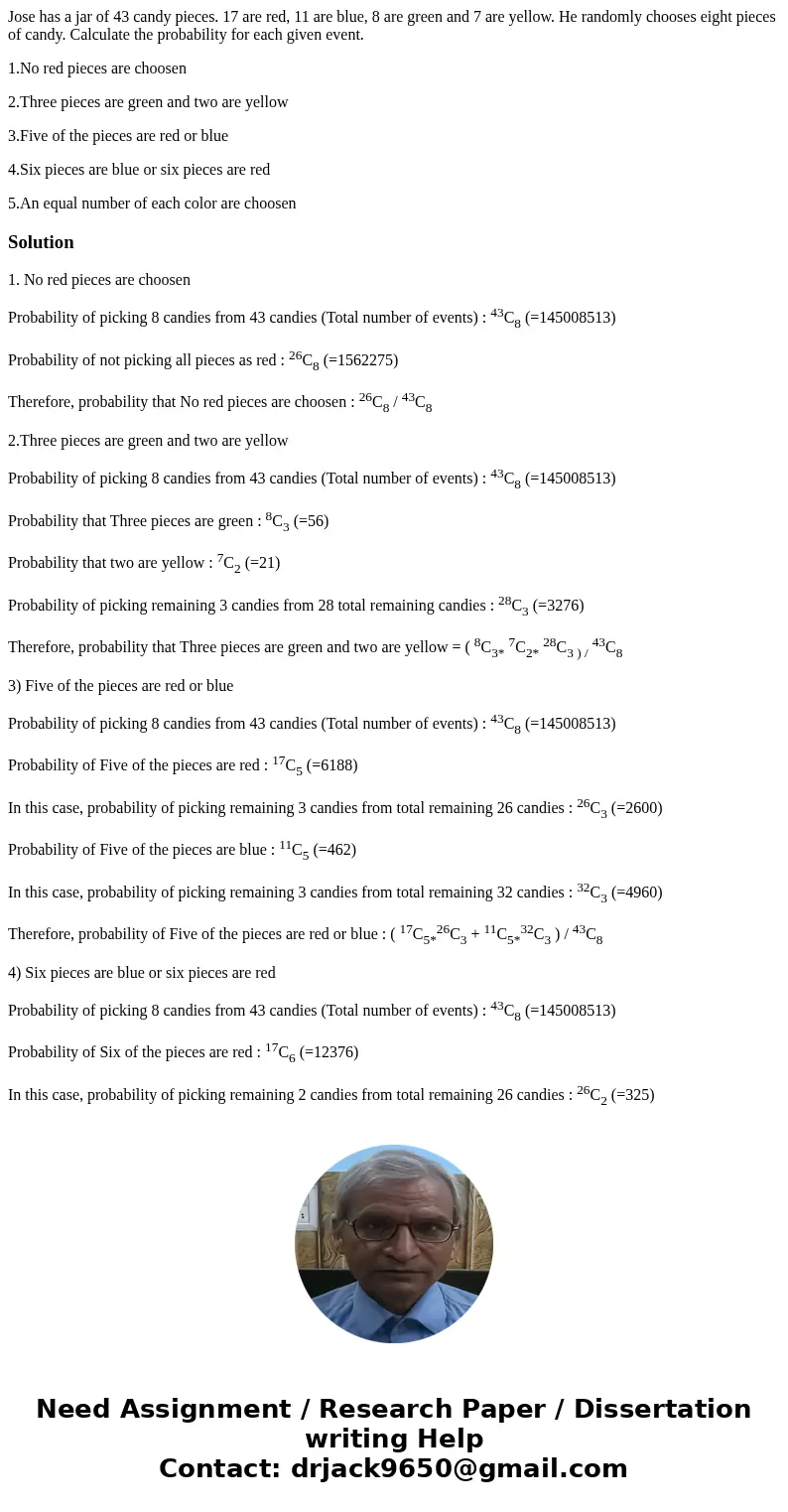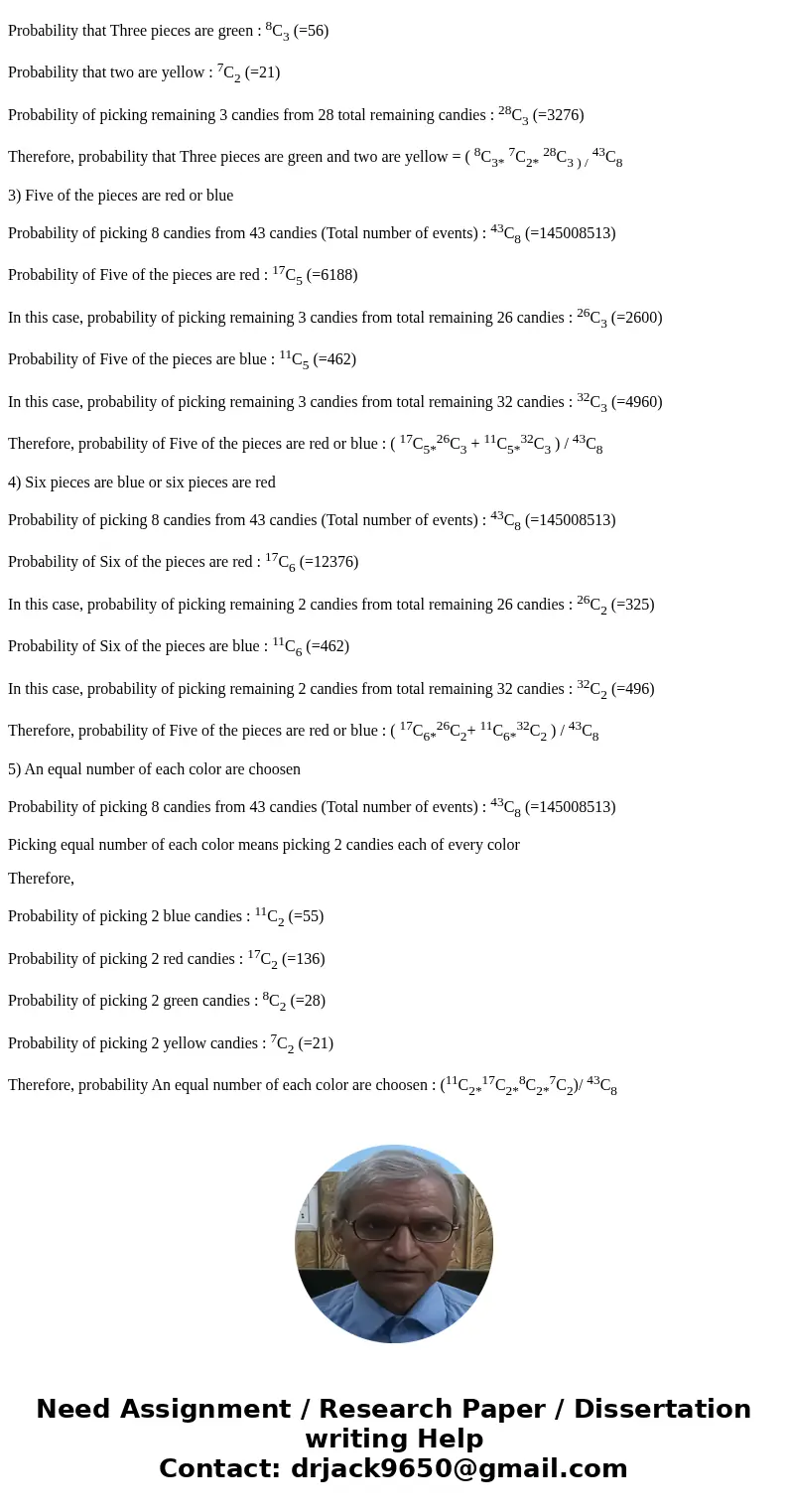Jose has a jar of 43 candy pieces 17 are red 11 are blue 8 a
Jose has a jar of 43 candy pieces. 17 are red, 11 are blue, 8 are green and 7 are yellow. He randomly chooses eight pieces of candy. Calculate the probability for each given event.
1.No red pieces are choosen
2.Three pieces are green and two are yellow
3.Five of the pieces are red or blue
4.Six pieces are blue or six pieces are red
5.An equal number of each color are choosen
Solution
1. No red pieces are choosen
Probability of picking 8 candies from 43 candies (Total number of events) : 43C8 (=145008513)
Probability of not picking all pieces as red : 26C8 (=1562275)
Therefore, probability that No red pieces are choosen : 26C8 / 43C8
2.Three pieces are green and two are yellow
Probability of picking 8 candies from 43 candies (Total number of events) : 43C8 (=145008513)
Probability that Three pieces are green : 8C3 (=56)
Probability that two are yellow : 7C2 (=21)
Probability of picking remaining 3 candies from 28 total remaining candies : 28C3 (=3276)
Therefore, probability that Three pieces are green and two are yellow = ( 8C3* 7C2* 28C3 ) / 43C8
3) Five of the pieces are red or blue
Probability of picking 8 candies from 43 candies (Total number of events) : 43C8 (=145008513)
Probability of Five of the pieces are red : 17C5 (=6188)
In this case, probability of picking remaining 3 candies from total remaining 26 candies : 26C3 (=2600)
Probability of Five of the pieces are blue : 11C5 (=462)
In this case, probability of picking remaining 3 candies from total remaining 32 candies : 32C3 (=4960)
Therefore, probability of Five of the pieces are red or blue : ( 17C5*26C3 + 11C5*32C3 ) / 43C8
4) Six pieces are blue or six pieces are red
Probability of picking 8 candies from 43 candies (Total number of events) : 43C8 (=145008513)
Probability of Six of the pieces are red : 17C6 (=12376)
In this case, probability of picking remaining 2 candies from total remaining 26 candies : 26C2 (=325)
Probability of Six of the pieces are blue : 11C6 (=462)
In this case, probability of picking remaining 2 candies from total remaining 32 candies : 32C2 (=496)
Therefore, probability of Five of the pieces are red or blue : ( 17C6*26C2+ 11C6*32C2 ) / 43C8
5) An equal number of each color are choosen
Probability of picking 8 candies from 43 candies (Total number of events) : 43C8 (=145008513)
Picking equal number of each color means picking 2 candies each of every color
Therefore,
Probability of picking 2 blue candies : 11C2 (=55)
Probability of picking 2 red candies : 17C2 (=136)
Probability of picking 2 green candies : 8C2 (=28)
Probability of picking 2 yellow candies : 7C2 (=21)
Therefore, probability An equal number of each color are choosen : (11C2*17C2*8C2*7C2)/ 43C8


 Homework Sourse
Homework Sourse